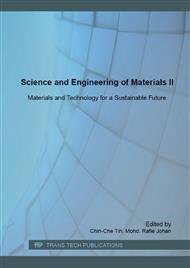p.195
p.200
p.205
p.211
p.216
p.220
p.225
p.230
p.235
Interfacial Reaction between Sn-Ag-Cu-Mg Solder and ENIG Substrate
Abstract:
In order to clarify the effect of the addition of Mg to Sn-Ag-Cu solder on the wettability and the microstructure of the solder, the reaction between Sn-Ag-Cu-Mg solder and a substrate was investigated. Sn-3.5mass%Ag-1.0mass%Cu-xMg solders (x =0, 0.2 and 0.4 mass%) was specially prepared in this study. For the reflow process, specimens were heated in a radiation furnace at 250 oC for 120 s to evaluate the wettability of the solder on a substrate and the microstructure of the solder matrix and the intermetallic compound layer at the interface. The results showed that the spreading area of Sn-Ag-Cu-Mg solder is almost similar with that of Sn-Ag-Cu solder regardless of oxygen concentration. In the case of Sn-Ag-Cu-Mg solders, it was observed that intermetallic compounds (IMCs) containing Mg were formed in the solder matrix and near the interface. The IMC formation at the interface for Sn-Ag-Cu-Mg solders was almost similar with that for Sn-Ag-Cu solder.
Info:
Periodical:
Pages:
216-219
Citation:
Online since:
July 2016
Keywords:
Price:
Сopyright:
© 2016 Trans Tech Publications Ltd. All Rights Reserved
Share:
Citation:


